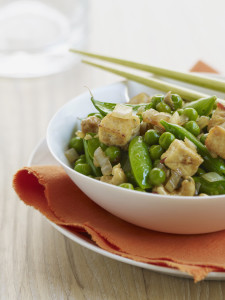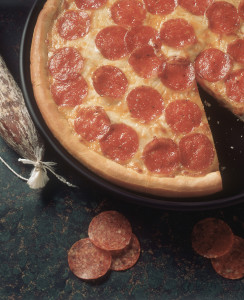Actually, it’s science and your palate that determines best pairings
By Brian Gurnham, Columnist, The Times
 Scour the web and you can find hundreds of articles about pairing various types of food with their perfect mate from the wine world. The reality is that while there are a lot of guidelines based on science, it all comes down to personal preference. It’s no different than the food world. My brother used to eat peanut butter and mayonnaise sandwiches, I had an aunt that would always have cucumbers with vanilla ice cream, and who hasn’t heard of such common food pairings as apple pie and cheddar cheese, pretzels and ice cream, and pizza and ranch dressing?
Scour the web and you can find hundreds of articles about pairing various types of food with their perfect mate from the wine world. The reality is that while there are a lot of guidelines based on science, it all comes down to personal preference. It’s no different than the food world. My brother used to eat peanut butter and mayonnaise sandwiches, I had an aunt that would always have cucumbers with vanilla ice cream, and who hasn’t heard of such common food pairings as apple pie and cheddar cheese, pretzels and ice cream, and pizza and ranch dressing?
Most people know the “red with beef, white with chicken” rule, but alas, there are no rights or wrongs per se. Despite the individual nature of pairings, there are combinations that to most people, taste better. By “taste better” we mean that the combination of the food with the wine enhances the flavors of both. The reasons for this lie in the physical and chemical attributes of food and wine. In this article we look at food and wine pairings based on five components – intensity, acidity, fattiness, saltiness, and sweetness, and provide some science based suggestions.
Match Intensity – Think of this as matching instruments in an orchestra. You don’t want your food playing “fortissimo” and your wine “pianissimo”. Matching intensity in food wine pairings requires that the wine and food be in balance, with neither dominating. If you are having a meal that most would consider “heavy” or “rich” or “filling”, then the best wines are usually of the same ilk. A beef bourguignon would completely overpower a light Sauvignon Blanc for example. Similarly if your menu includes a lightly breaded flounder fillet, opening a big bold Syrah with it, well, you might as well just skip the flounder. The better combination (again to most) would be the Syrah with the beef and the Sauvignon Blanc with the flounder. What makes this challenging, and fun, is that there are so many wines available today that you must go beyond simply red or white. Light reds with minimal tannins and lower alcohol are available to pair with fish. For example a light Pinot Noir can be an excellent accompaniment to a salmon dish. Conversely, big full bodied Chardonnays can work with rich white sauces such as a Fettuccini Alfredo Carbonara. Remember that when pairing food with a pronounced sauce, pair using the attributes of the sauce. Conversely, in the absence of sauce, pair to the main ingredient.
Acidic Foods – Acid is a common element in many foods and food condiments. Acids add a flavor enhancing crispness – think a splash of lemon on fresh fish. Many foods are naturally high in acids such as foods containing tomatoes, citrus, vinegar or green apples. Wines that pair well with acidic foods contain equal or greater levels of acidity – a case of pairing like with like. One important thing to remember, make sure the perceived acidity of the wine is equal to or greater than the food. If you fail this test, you run the risk of the wine tasting flat by comparison. Some excellent pairings in this category include Barbera or Chianti with tomato based pasta, pesto pasta with Vermentino and Mussels Provencal and Sauvignon Blanc.
Fatty Foods – If you are eating a relatively rich, “fatty” food dish (e.g. ribs, Au Gratin potatoes, or duck), the fats in the food tend to coat the tongue, masking the ability of those 9,000 taste buds to do their job. There are two ways to work with rich fatty food dishes. The first is to serve wines high in acidity (e.g. Sauvignon Blanc, Vernaccia, or Barbera). The high acidity cuts the fattiness producing a balanced sensation in the mouth. The second approach is to incorporate wines higher in tannins. The most famous of combinations here is a Cabernet Sauvignon based wine paired with a steak. Much like the acidity/fat combination, the protein and fat in the meat offset the cotton mouth effect of the tannins – setting up a delightful battleground of flavors and sensations in the mouth.

Opposites can attract when it comes to win: a sweet German Riesling can do wonders for a savory, salty Asian dish.
Salty Foods – People salt their food to enhance its flavor. This enhancement is the result of salt making some chemical compounds more volatile, releasing the flavors in the mouth so that more smells reach our olfactory epithelium, and the food tastes are more pronounced. Wine contains no salt; however salt in food interacts with wine in several somewhat complex ways. First, acidity in wine reduces saltiness, and for this reason crisp whites and sparkling wines pair well with savory, spicy and somewhat salty dishes. Salt will tend to accentuate tannins making rich full bodied reds overly astringent – not a good idea. Lastly salt will also accentuate alcohol, potentially making a wine taste “hot” – so avoiding wines high in alcohol by volume (i.e. greater than 13.5%) will help your pairings. Also remember that some people enjoy the rivalry between sweet and salt – remember the pretzels and ice cream? A sweet German Riesling can do wonders for a savory, salty Asian dish.
Sweet Foods – Sweet wines are frequently associated with sweet desserts. While this is a logical complement, it’s important to remember that the sweetness in the wine must be at a higher level than the sweetness in the food. If you serve a dry wine with a sweet dessert, the wine’s flavors will be masked by the sweetness of the food, and the wine will taste flat and unimpressive. One of my favorites? Apple cider French toast with a late harvest Riesling or Sauternes.
All of this demonstrates what is by far the single most important rule of food and wine pairings – you can do whatever you like, as long as you enjoy the outcome. If you like a crisp Sauvignon Blanc with pizza, go for it. A big cabernet sauvignon with your flounder almondine – be my guest. Just know that any of these would make gastronomic oenophiles cringe – but then again so would peanut butter and mayonnaise sandwiches. My advice? Experiment within the established guidelines but then let your imagination run wild. You might be pleasantly surprised at what you discover.
To have a little fun and test your food and wine pairing skills, try this quiz.
Brian Gurnham is a Certified Specialist of Wine, owner of Corkquiz.com, teaches wine appreciation classes, and is a part time wine team member at Total Wine in Claymont, DE, He has travelled to many of the world’s most famous wine regions, most recently France’s Loire Valley this past summer.








